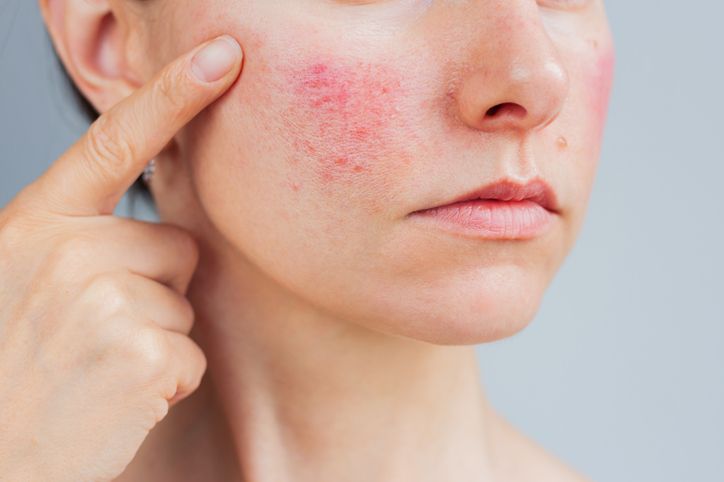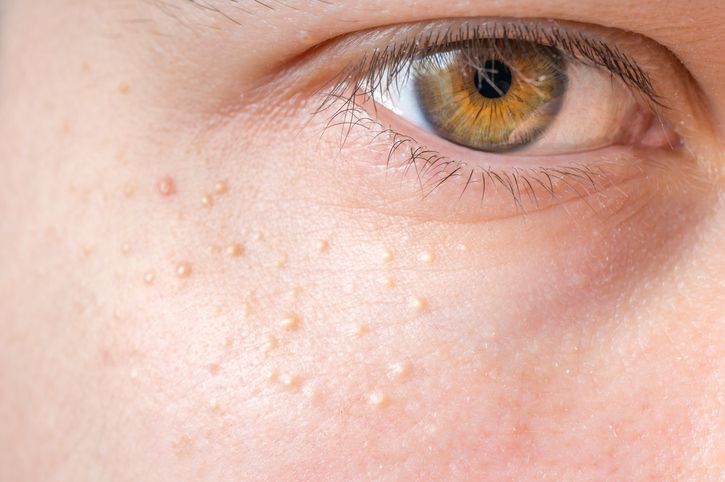- Home
- Trend
- Weight Loss Strategies
- Acne Tips
- Hair Health Information
- Blemish Removal Tips
- Acne Scar Removal Tips
- Muscle Building Techniques
- Intimate Care Tips
- Postpartum Intimate Care
- Eye Bags Wiki
- Tips for Face Slimming
- Secret of Permanent Hair Removal
- Breast Enlargement Tips
- Cure to Snoring
- Marionette Lines
- Skin-Tightening Secrets
Hair regrowth treatments are nothing new to those struggling with hair loss. Whether it’s hair transplants or topical/oral treatments, each option has its fans—and pros and cons. To effectively tackle hair loss, it’s essential to find a treatment that truly suits your individual needs. With modern lifestyles impacted by chronic stress and pollution, hair loss has become increasingly common. Naturally, this demand has sparked a surge in regrowth treatments of varying quality.
1. Understand the Root Causes of Hair Loss Before Starting Treatment

Hair goes through four growth phases: the growing phase, transition phase, resting phase, and regrowth phase. In women, roughly 90% of hair is typically in the growing phase. It’s considered normal to lose 50–100 hairs a day. But if you’re consistently shedding more than 100–150 strands, it could indicate abnormal hair loss—and a signal to consider a regrowth treatment.
Common causes of hair loss in women include stress, illness, chemical damage from styling (like bleaching or perming), and postpartum hair loss. Today’s women face increasing work stress and often lack proper rest and nutrition, both of which are crucial for healthy hair growth.
Chemical-heavy dye and styling products can also damage the scalp, weakening hair and causing excessive shedding. In severe cases, it can trigger scalp sensitivity and further hair loss.
Postpartum hair loss is another widespread issue. During the final trimester of pregnancy, more hair enters the resting phase. After giving birth, new hair growth pushes out old strands, causing noticeable shedding. This typically becomes most obvious around four months postpartum and usually subsides by the seventh month. However, if a new mother also experiences emotional stress or postpartum depression, it may worsen the condition.
2. What Types of Hair Regrowth Treatments Are Available?

As hair loss becomes more common, the number of treatment centers and methods has exploded—making it overwhelming for first-timers. To simplify things, let’s explore the main types of treatments from both traditional Chinese and Western medical perspectives:
TCM-Based Hair Regrowth Treatments
Many clinics now offer traditional Chinese medicine (TCM)–inspired hair regrowth treatments. These focus on internal balance—particularly strengthening the liver and kidneys, and clearing internal heat and dampness. The goal is to harmonize the body’s organs and qi (energy), which in turn nourishes the scalp and promotes hair growth.
TCM practitioners will observe your scalp, check your pulse, examine your complexion, skin, and tongue, and tailor herbal prescriptions accordingly. Acupuncture is often used alongside herbal remedies to enhance treatment outcomes.
Western Medicine–Based Hair Regrowth Treatments
Western treatments rely on pharmaceutical methods—typically a combination of oral medication and topical formulas. One common oral treatment is finasteride, which works by inhibiting the conversion of testosterone into DHT, a hormone that causes hair follicles to shrink. While effective, finasteride may cause side effects like erectile dysfunction, testicular pain, and reduced libido—so it’s crucial to consult a doctor first.
If oral medication isn’t preferred, minoxidil (a topical treatment) is another option. Applied directly to the scalp for at least two months, it can stimulate hair growth. However, stopping use can result in resumed shedding. Potential side effects include contact dermatitis and a burning sensation at the application site.
免費體驗
F8 Hair Regrowth Treatment
1 Minute Self-Registration
Date should not be before minimal date
3. Comparing Non-Invasive Hair Treatments vs. Hair Transplant Surgery
The treatments mentioned above only work if the hair follicles are still alive. For individuals with follicle death, a hair transplant may be a better solution. This minimally invasive surgical procedure involves transplanting healthy hair follicles (usually from the back of the head) to balding areas for a fuller, natural look.
That said, hair transplants are highly technical procedures. If done incorrectly, they can result in follicle death or severe folliculitis (inflammation of the hair follicles).
Here’s a quick comparison:
| Non-Invasive Treatments | Hair Transplant Surgery |
|---|---|
| - Scalp rejuvenation | - FUE (Follicular Unit Extraction) |
| - Low-level laser therapy | - FUT (Follicular Unit Transplantation) |
| - Microneedling | |
| - Oral/topical medication |
4. How to Tell If a Hair Regrowth Treatment Is Legit
A reliable hair regrowth clinic should always start with scalp analysis. This involves magnifying the scalp to assess follicle health, sensitivity, hair thickness, and bacterial levels. Quality equipment is essential—treatment devices should be medically certified and safe for repeated use without damaging the scalp or hair.
Also, experienced specialists and therapists are crucial. They can tailor treatments to each person’s needs and adjust strategies as the hair responds over time.
5. What’s the Typical Hair Regrowth Treatment Process?
Like other professional skincare or wellness services, regrowth treatments begin with a detailed consultation. Here's what the process typically looks like:
Step 1: Scalp Diagnosis
The therapist examines the scalp using magnification tools to assess follicle condition, hair thickness, and overall scalp health. This diagnostic step is essential for crafting a personalized treatment plan.
Step 2: Personalized Treatment Plan
Based on the analysis and your concerns, a tailored plan is created. If opting for a transplant, the number of grafts is calculated. For TCM approaches, appropriate herbs and acupuncture points are determined.
Step 3: Begin Treatment
The chosen plan is implemented. Patience is key—hair growth follows natural cycles. Even if follicles are reactivated, it takes time to see visible results. One session alone won’t be enough.
Step 4: Monitor Progress & Adjust Plan
Therapists will track your progress and fine-tune your treatment accordingly. For instance, TCM treatments involve regular reassessment, with pulse diagnosis and customized herbal updates—there’s no “one size fits all” approach.
6. A Hair Regrowth Treatment That Works for Everyone? Try the Perfect Medical F8 Hair Regrowth Treatment!
With so many treatments available, choosing one can be overwhelming. But if you're dealing with issues like a widening part, thinning hair, receding hairline, M-shaped hairline, patchy hair loss, or postpartum shedding, consider the Perfect Medical F8 Hair Regrowth Treatment.
This is a non-invasive, drug-free treatment using medical-grade soft laser technology to stimulate follicles. The low-level laser penetrates deep into the scalp, reactivating dormant follicles and promoting new hair growth from the root.
The treatment follows three key steps: “Nourish. Activate. Regrow.”
• Nourish: Deeply cleanse the scalp, remove buildup, and prep the skin.
• Activate: Use medical lasers to deliver potent nutrients and accelerate cell regeneration.
• Regrow: Apply high-performance hair serums that activate stem cells and repair scalp tissues, promoting thick, healthy new hair growth.
Perfect Medical is currently offering a free trial of the F8 Hair Regrowth Treatment. Click the link below to reserve your spot—don't hesitate!
Reserve Now: Perfect Medical F8 Hair Regrowth Treatment免費體驗
F8 Hair Regrowth Treatment
1 Minute Self-Registration
Date should not be before minimal date
FAQ

How can I tell if a hair regrowth treatment is effective?
Look for clinics that offer scalp analysis using magnifying tools. A professional assessment should include follicle condition, scalp sensitivity, hair thickness, and bacterial presence. Make sure the equipment used is medically certified and safe. Also, treatments should be led by trained professionals who can customize the plan for your specific needs.
What should I know before choosing a hair transplant?
Hair transplants involve extracting follicles from the back of your head and relocating them to balding areas. While it can offer natural-looking results, it's a delicate procedure. If performed poorly, it may cause permanent follicle damage or severe scalp inflammation.
How does the Perfect Medical F8 Program work?
It uses soft laser therapy to penetrate the scalp and stimulate hair growth at the follicular root. The process cleanses, repairs, and regenerates the scalp for long-term results. The three-step approach—Nourish, Activate, Regrow—makes it a comprehensive and highly effective treatment.
Is the Perfect Medical F8 Program safe?
Yes. It’s completely non-invasive, painless, and requires no downtime—perfect for busy lifestyles. The 650nm LLLT (low-level laser therapy) has been clinically shown to improve hair density without side effects.
How long does it take?
For mild to moderate cases, a treatment cycle lasts around 3–6 months. Severe hair loss may require 9–12 months. Most people see noticeable improvement after completing the full program.









